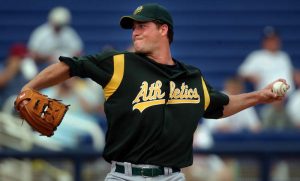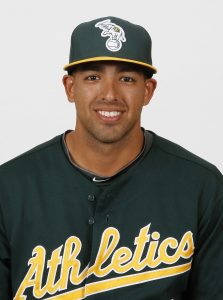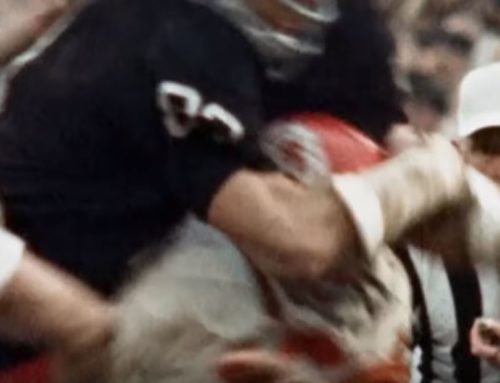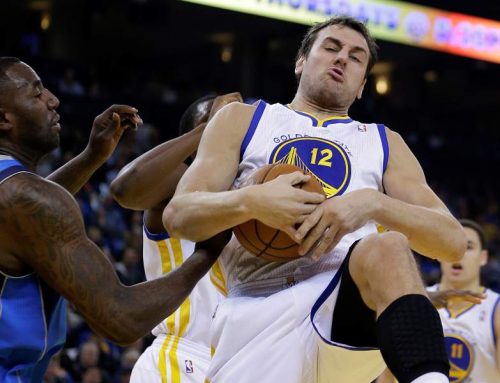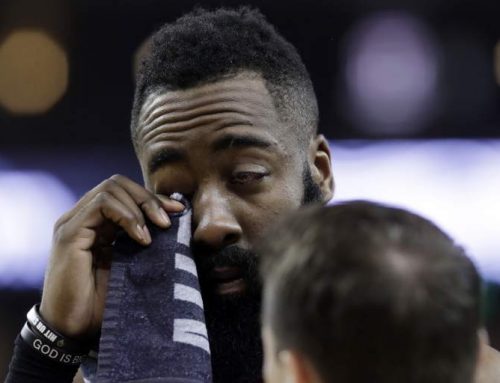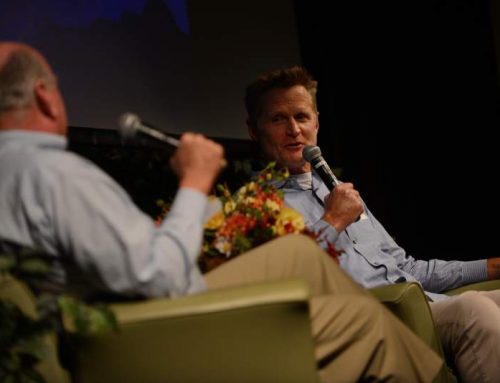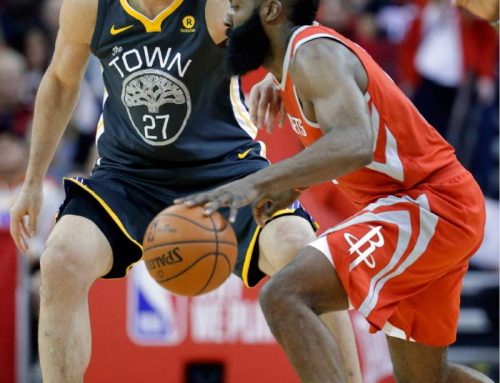When the A’s bookended the month of August by trading, first, Josh Reddick and Rich Hill to the Dodgers and, later, Coco Crisp to the Indians, Oakland fans felt the re-emergence of a chronic pain. Reddick and Crisp were fan favorites, and Hill was clearly the team’s best pitcher, and with signatures on two pieces of paper, general manager Billy Beane sent them away to the cornfield of former A’s.
These transactions may eventually look brilliant, as have many of Beane’s trades through the years. The three prospects and one journeyman (Colt Hynes, collected in the Coco swap, is 31) that the Athletics received for their three veterans may prove to be All-Stars. One of them, pitcher Jharel Cotton, has already logged some electric moments on the Oakland Coliseum mound.
To A’s fans, though, it’s part of a familiar, morose pattern: Develop young baseball players into stars, then trade those stars for prospects, then develop those prospects into stars, then trade those stars, etc., etc.
A’s infinitum.
But are we all being knee-jerks, scolding Beane every time he trades recognizable names for minor-league talent? Should we wait to see how the incoming players develop before shaking our fists at the GM?
And here’s an even more basic question: Is the pattern really a pattern? Is the A’s roster truly a perpetual house-flip that denies our hearts a permanent, or even long-term, home? Well, maybe it is.
Let me tell you a story. Please follow along.
In 1998, the A’s made pitcher Mark Mulder the second player selected in the MLB draft. Beane’s Moneyball principles dictate that the Athletics seek out bargains – players who are short, or unathletic, or who field with carved pumpkins instead of leather gloves. Mulder was none of these things. He was a natural, and by 2001 he was winning 21 games and finishing second in the AL Cy Young balloting.
Mulder, along with Tim Hudson and Barry Zito, became part of the famed Big Three that propelled the A’s to four consecutive playoff appearances from 2000 to 2003.
But that team never got past the first round of the postseason, and Beane began to dismantle it. On Dec. 18, 2004, he traded Mulder, his stud, to St. Louis for pitchers Dan Haren and Kiko Calero and first baseman Daric Barton.
All of them would play for the A’s, but it was Haren who emerged as the prize.
In his final year with the Cardinals, Haren had started five games and went 3-3. But Beane spotted the kid’s talent, and he became a stopper, winning 43 games from 2005-07. Haren was an All-Star in 2007. The A’s were losing by then, though, and on December 14, 2007, Beane dealt Haren (with young Connor Robertson) to the Diamondbacks for a massive stack of baseball cards that included Brett Anderson, Chris Carter, Aaron Cunningham, Dana Eveland, Carlos Gonzalez and Greg Smith.
A’s fans groaned. But looking back, it’s clear that the sum total of that haul exceeded whatever Dan Haren could give the team.
Unfortunately, it is not recorded as a decisive victory for Beane and his scouting department. Of the six players who came from Arizona, the most intriguing was Carlos Gonzalez. He was 22 at the time, had a beautiful arc of a swing and ranged all over the outfield. CarGo had superstar written all over him, and he has crept close to that status. But not with the A’s. Beane traded him to Colorado less than a year later, along with Smith and Huston Street, for slugger Matt Holliday.
This was a different sort of maneuver for Beane and supposedly cash-strapped A’s. This time they were the ones getting the big name. Holliday was coming off three straight All-Star seasons for the Rockies, and had been runner-up for NL Most Valuable Player in 2007. He had forearms like Parma hams.
Alas, the A’s found themselves floundering again in 2009, and Beane got rid of Holliday near the trade deadline. On July 24 of that year the A’s sent him to the Cardinals for Clayton Mortensen, Shane Peterson and Brett Wallace, a trio that had combined to play one major league game.
Some people were excited by the Holliday trade, though. They were in the Press Democrat newsroom. Wallace had grown up in Sonoma. We had a local connection to the A’s. For a little less than five months.
On Dec. 16, 2009, Beane traded Wallace to Toronto for outfielder Michael Taylor. Our local angle had evaporated, but Taylor seemed like a good find. He was a former Stanford standout whom Baseball America described as “a physical specimen.”
Taylor may have been that, but he never panned out in Oakland. He played very small portions of three seasons (2011-13), and hit one home run in 74 at-bats. Recognizing his mistake, Beane traded Taylor to the Chicago White Sox for pitcher Jake Sanchez on June 14, 2014.
Sanchez is currently pitching well for Double-A Midland in the Texas League, where he is 7-5 with a 3.10 ERA at press time. MLB.com does not list Sanchez among the A’s top 30 prospects, but that doesn’t mean the kid has no future. In fact, if Beane’s track record in any indication, Sanchez should develop into a reliable major league starter within a few years.
And then Beane will probably trade him away.
Mark Mulder –> Dan Haren –> Carlos Gonzalez –> Matt Holliday –> Brett Wallace –> Michael Taylor –> Jake Sanchez. And counting. For A’s fans, the next great player is just around the bend, and the last great one is on his way out of town.

